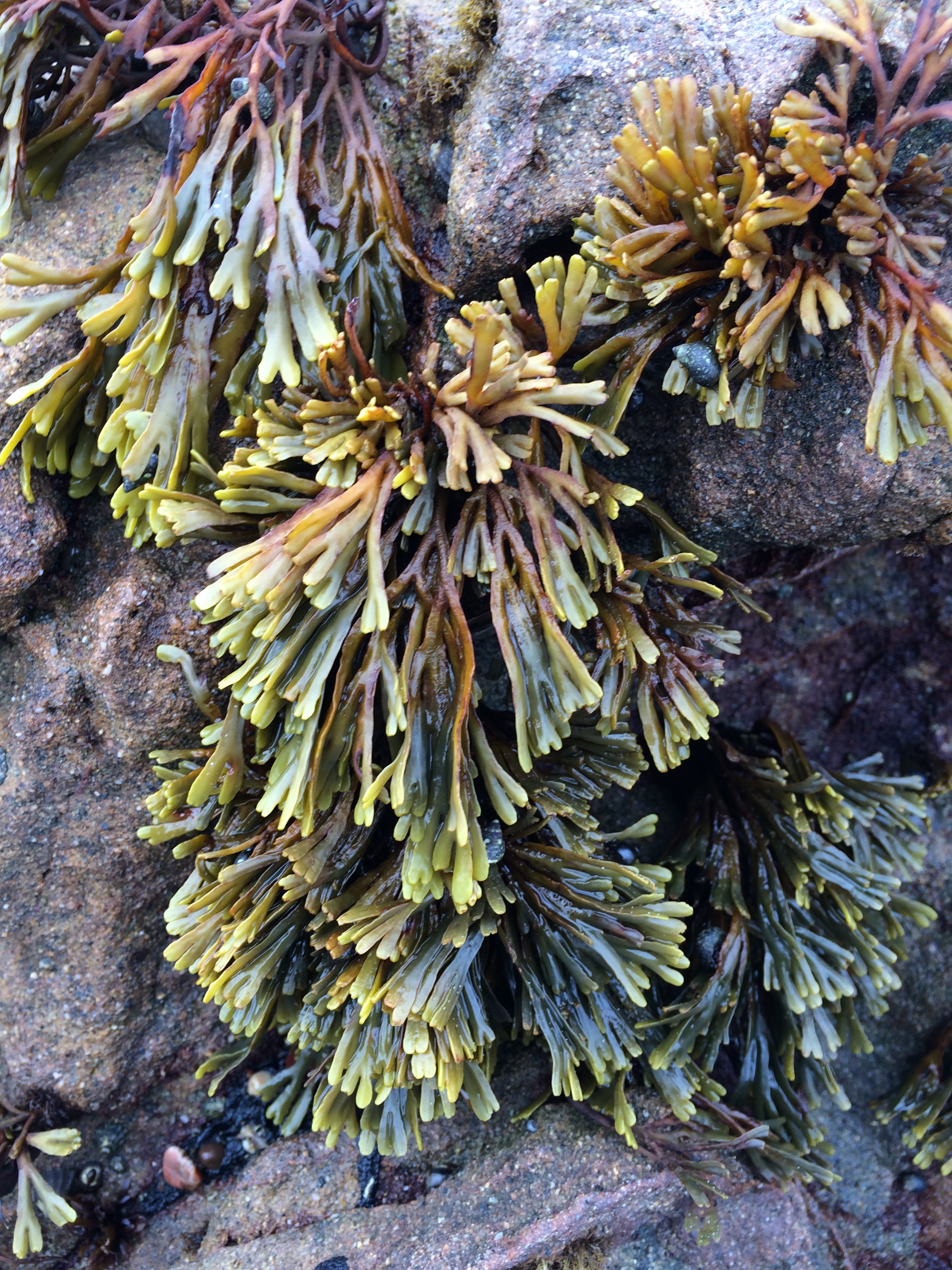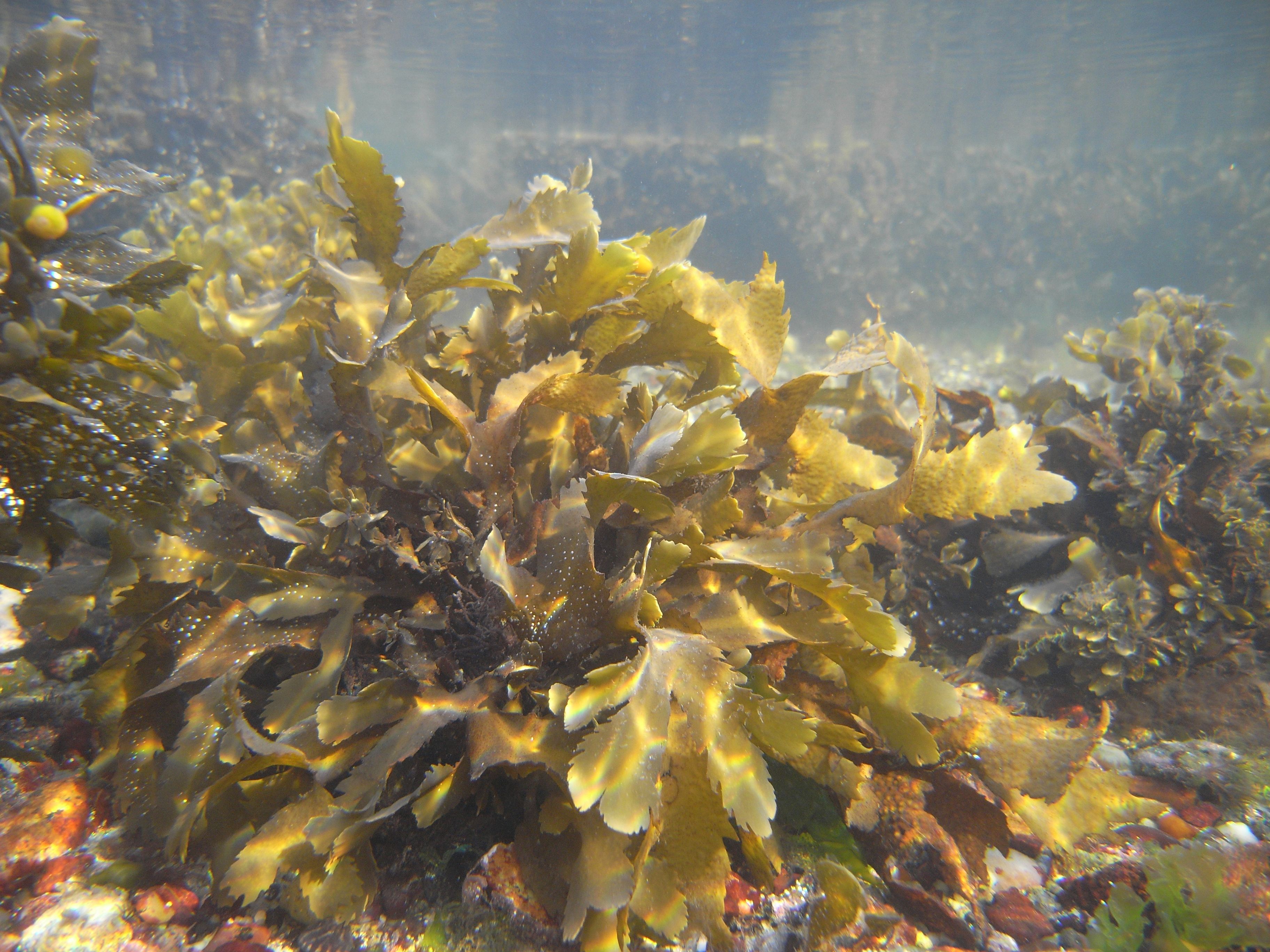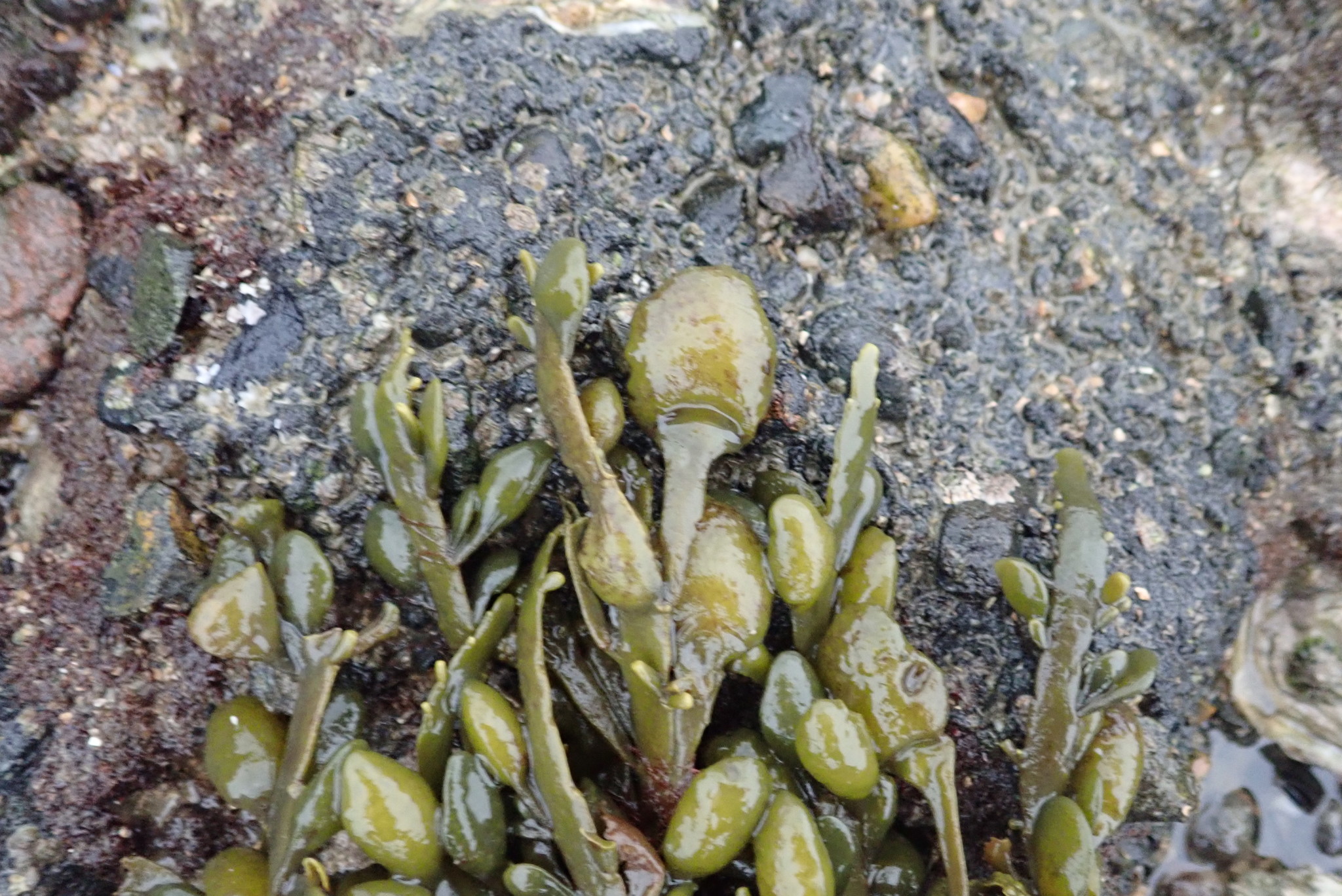|
Fucaceae
The Fucaceae are a family of brown algae, containing six genera: *''Ascophyllum'' Stackhouse – one species *''Fucus'' L. – 15 species *'' Hesperophycus'' Setchell & Gardner – one species *'' Pelvetia'' Decne. & Thur. – one species *'' Pelvetiopsis'' N.L.Gardner – two species *''Silvetia ''Silvetia'' is a genus of brown algae, commonly known as rockweed, found in the intertidal zone of rocky seashores of the Pacific Ocean. These were originally classified as members of the genus ''Pelvetia''. In 1999, ''Silvetia sp.'' was created ...'' E.Serrão, T.O.Cho, S.M.Boo & S.H.Brawley – three species References Brown algae families {{Phaeophyceae-stub ... [...More Info...] [...Related Items...] OR: [Wikipedia] [Google] [Baidu] |
Fucaceae
The Fucaceae are a family of brown algae, containing six genera: *''Ascophyllum'' Stackhouse – one species *''Fucus'' L. – 15 species *'' Hesperophycus'' Setchell & Gardner – one species *'' Pelvetia'' Decne. & Thur. – one species *'' Pelvetiopsis'' N.L.Gardner – two species *''Silvetia ''Silvetia'' is a genus of brown algae, commonly known as rockweed, found in the intertidal zone of rocky seashores of the Pacific Ocean. These were originally classified as members of the genus ''Pelvetia''. In 1999, ''Silvetia sp.'' was created ...'' E.Serrão, T.O.Cho, S.M.Boo & S.H.Brawley – three species References Brown algae families {{Phaeophyceae-stub ... [...More Info...] [...Related Items...] OR: [Wikipedia] [Google] [Baidu] |
Silvetia
''Silvetia'' is a genus of brown algae, commonly known as rockweed, found in the intertidal zone of rocky seashores of the Pacific Ocean. These were originally classified as members of the genus ''Pelvetia''. In 1999, ''Silvetia sp.'' was created as a separate species from ''Pelvetia canaliculata'' due to differences of oogonium structure and of nucleic acid sequences of the rDNA. It was renamed in honor of Paul Silva Paul Claude Silva (October 31, 1922 – June 12, 2014) was a phycologist, marine biologist, and algal taxonomist considered to be the world's leading expert in the chlorophyte green algal genus '' Codium''. Silva was also an expert in botanical ..., Curator of Algae at the Herbarium of the University of California, Berkeley. There are three species and one subspecies. Taxonomy This list of species of ''Silvetia'' contains those considered to belong to this genus as of 2013: *'' Silvetia babingtonii'' (Harvey, 1860) (E.Serrão, T.O.Cho, S.M.Boo & Brawley, 199 ... [...More Info...] [...Related Items...] OR: [Wikipedia] [Google] [Baidu] |
Pelvetia
''Pelvetia canaliculata'', the channelled wrack, is a very common brown alga (Phaeophyceae) found on the rocks of the upper shores of Europe. It is the only species remaining in the monotypic genus ''Pelvetia''. In 1999, the other members of this genus were reclassified as ''Silvetia'' due to differences of oogonium structure and of nucleic acid sequences of the rDNA. Description ''Pelvetia'' grows to a maximum length of in dense tufts, the fronds being deeply channeled on one side: the channels and a mucus layer help prevent the seaweed drying (desiccation) when the tide is out. It is irregularly dichotomously branched with terminal receptacles, and is dark brown in color. Each branch is of uniform width and without a midrib. The receptacles are forked at the tips. It is distinguished from other large brown algae by the channels along the frond. It has no mid-rib, no air-vesicles and no cryptostomata. It forms the uppermost zone of algae on the shore growing at or above high- ... [...More Info...] [...Related Items...] OR: [Wikipedia] [Google] [Baidu] |
Fucus Serratus
''Fucus serratus'' is a seaweed of the north Atlantic Ocean, known as toothed wrack or serrated wrack. Description and reproduction ''Fucus serratus'' is a robust alga, olive-brown in colour and similar to ''Fucus vesiculosus'' and ''Fucus spiralis''. It grows from a discoid holdfast (biology), holdfast up to long. The fronds are flat, about wide, bifurcating, and up to long including a short Stipe (botany), stipe. It branches irregularly and dichotomously. The flattened blade has a distinct midrib and is readily distinguished from related taxa by the serrated edge of the fronds. It does not have air vesicle (biology), vesicles, such as are found in ''F. vesiculosus'', nor is it spirally twisted like ''F. spiralis''. Male and female receptacles are on different plants. The lamina shows cryptostomata – small cavities which produce colourless hairs. The reproductive bodies form in conceptacles sunken in Receptacle (botany), receptacles towards the tips on the branch ... [...More Info...] [...Related Items...] OR: [Wikipedia] [Google] [Baidu] |
Brown Alga
Brown algae (singular: alga), comprising the class (biology), class Phaeophyceae, are a large group of multicellular algae, including many seaweeds located in colder waters within the Northern Hemisphere. Brown algae are the major seaweeds of the temperate and polar regions. They are dominant on rocky shores throughout cooler areas of the world. Most brown algae live in marine environments, where they play an important role both as food and as a potential habitat. For instance, ''Macrocystis'', a kelp of the order Laminariales, may reach in length and forms prominent underwater kelp forests. Kelp forests like these contain a high level of biodiversity. Another example is ''Sargassum'', which creates unique floating mats of seaweed in the tropical waters of the Sargasso Sea that serve as the habitats for many species. Many brown algae, such as members of the order Fucales, commonly grow along rocky seashores. Some members of the class, such as kelps, are used by humans as food. Be ... [...More Info...] [...Related Items...] OR: [Wikipedia] [Google] [Baidu] |
Ascophyllum
''Ascophyllum nodosum'' is a large, common cold water seaweed or brown alga (Phaeophyceae) in the family Fucaceae, being the only species in the genus ''Ascophyllum''. It is a seaweed that only grows in the northern Atlantic Ocean, also known in localities as feamainn bhuí, rockweed, Norwegian kelp, knotted kelp, knotted wrack or egg wrack. It is common on the north-western coast of Europe (from the White Sea to Portugal) including east Greenland and the north-eastern coast of North America, its range further south of these latitudes being limited by warmer ocean waters. Description ''Ascophyllum nodosum'' has long tough and leathery fronds,Bunker, F.StP., Maggs, C.A., Brodie, J.A. and Bunker, J.A. 2017. ''Seaweeds of Britain and Ireland.'' Second Edition. Wild Nature Press, Plymouth, UK. irregularly dichotomously branched fronds with large, egg-shaped air bladders set in series at regular intervals along the fronds and not stalked. The fronds can reach 2 m in length and a ... [...More Info...] [...Related Items...] OR: [Wikipedia] [Google] [Baidu] |
Fucus
''Fucus'' is a genus of brown algae found in the intertidal zones of rocky seashores almost throughout the world. Description and life cycle The thallus is perennial with an irregular or disc-shaped holdfast or with haptera. The erect portion of the thallus is dichotomous or subpinnately branched, flattened and with a distinct midrib. Gas-filled pneumatocysts (air-vesicles) are present in pairs in some species, one on either side of the midrib. The erect portion of the thallus bears cryptostomata and caecostomata (sterile surface cavities). The base of the thallus is stipe-like due to abrasion of the tissue lateral to the midrib and it is attached to the rock by a holdfast. The gametangia develop in conceptacles embedded in receptacles in the apices of the final branches. They may be monoecious or dioecious. These algae have a relatively simple life cycle and produce only one type of thallus which grows to a maximum size of 2 m. Fertile cavities, the conceptacles, conta ... [...More Info...] [...Related Items...] OR: [Wikipedia] [Google] [Baidu] |
Michel Adanson
Michel Adanson (7 April 17273 August 1806) was an 18th-century French botanist and naturalist who traveled to Senegal to study flora and fauna. He proposed a "natural system" of taxonomy distinct from the binomial system forwarded by Linnaeus. Personal history Adanson was born at Aix-en-Provence. His family moved to Paris in 1730. After leaving the Collège Sainte-Barbe he was employed in the cabinets of R. A. F. Réaumur and Bernard de Jussieu, as well as in the Jardin des Plantes, Paris. He attended lectures at the Jardin du Roi and the Collège Royal in Paris from 1741 to 1746. At the end of 1748, funded by a director of the Compagnie des Indes, he left France on an exploring expedition to Senegal. He remained there for five years, collecting and describing numerous animals and plants. He also collected specimens of every object of commerce, delineated maps of the country, made systematic meteorological and astronomical observations, and prepared grammars and dictionari ... [...More Info...] [...Related Items...] OR: [Wikipedia] [Google] [Baidu] |
AlgaeBase
AlgaeBase is a global species database of information on all groups of algae, both marine and freshwater, as well as sea-grass. History AlgaeBase began in March 1996, founded by Michael Guiry. Text was copied from this source, which is available under Attribution 4.0 International (CC BY 4.0)licence. (Sehere. By 2005, the database contained about 65,000 names. In 2013, AlgaeBase and the Flanders Marine Institute (VLIZ) signed an end-user license agreement regarding the Electronic Intellectual Property of AlgaeBase. This allows the World Register of Marine Species (WoRMS) to include taxonomic names of algae in WoRMS, thereby allowing WoRMS, as part of the Aphia database, to make its overview of all described marine species more complete. Synchronisation of the AlgaeBase data with Aphia and WoRMS was undertaken manually until March 2015, but this was very time-consuming, so an online application was developed to semi-automate the synchronisation, launching in 2015 in conju ... [...More Info...] [...Related Items...] OR: [Wikipedia] [Google] [Baidu] |
National University Of Ireland, Galway
The University of Galway ( ga, Ollscoil na Gaillimhe) is a public research university located in the city of Galway, Ireland. A tertiary education and research institution, the university was awarded the full five QS stars for excellence in 2012, and was ranked among the top 1 percent of universities in the 2018 ''QS World University Rankings''. The university was founded in 1845 as "Queen's College, Galway". It was known as "University College, Galway" (UCG) (Irish: ''Coláiste na hOllscoile, Gaillimh''), until 1997 and as "National University of Ireland, Galway" (NUI Galway) (Irish: ''Ollscoil na hÉireann, Gaillimh; OÉ Gaillimh''), until 2022. In late April 2022, it was announced that NUI Galway would be renamed "Ollscoil na Gaillimhe – University of Galway" in summer 2022, amid confusion over its proper title. University of Galway is a member of the Coimbra Group, a network of 40 long-established European universities. History The university was established in 1845 as ' ... [...More Info...] [...Related Items...] OR: [Wikipedia] [Google] [Baidu] |





